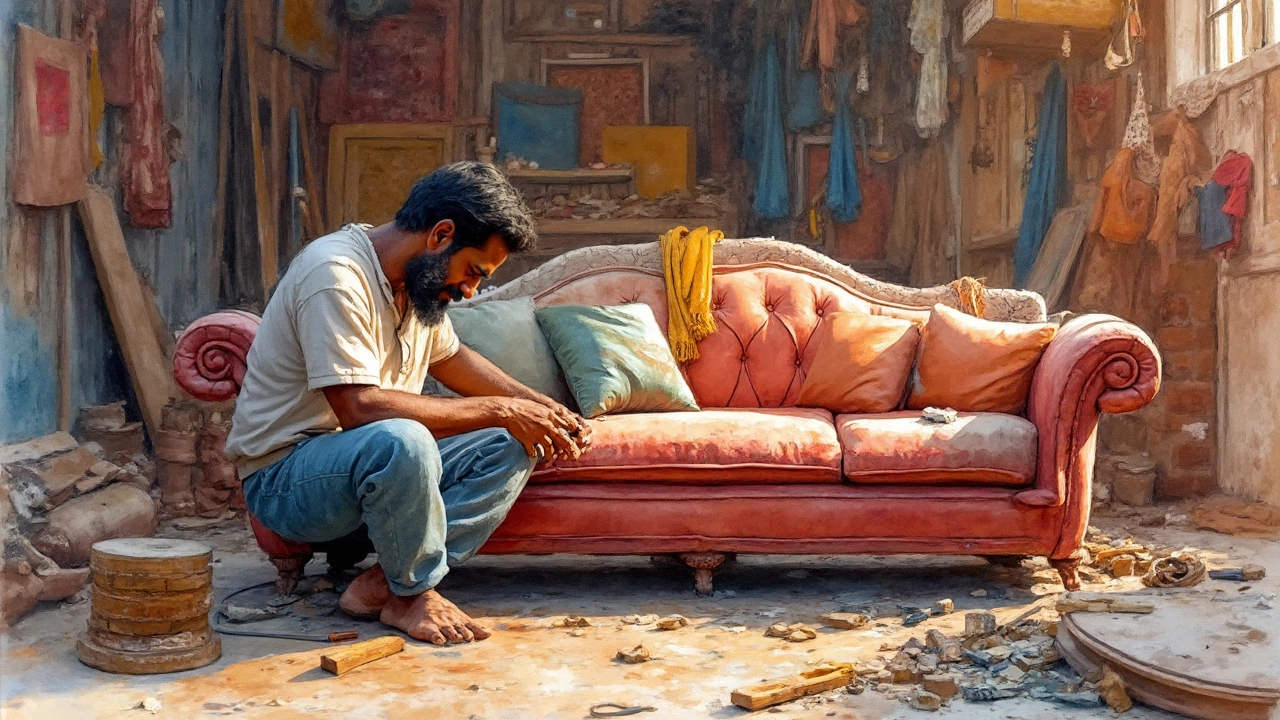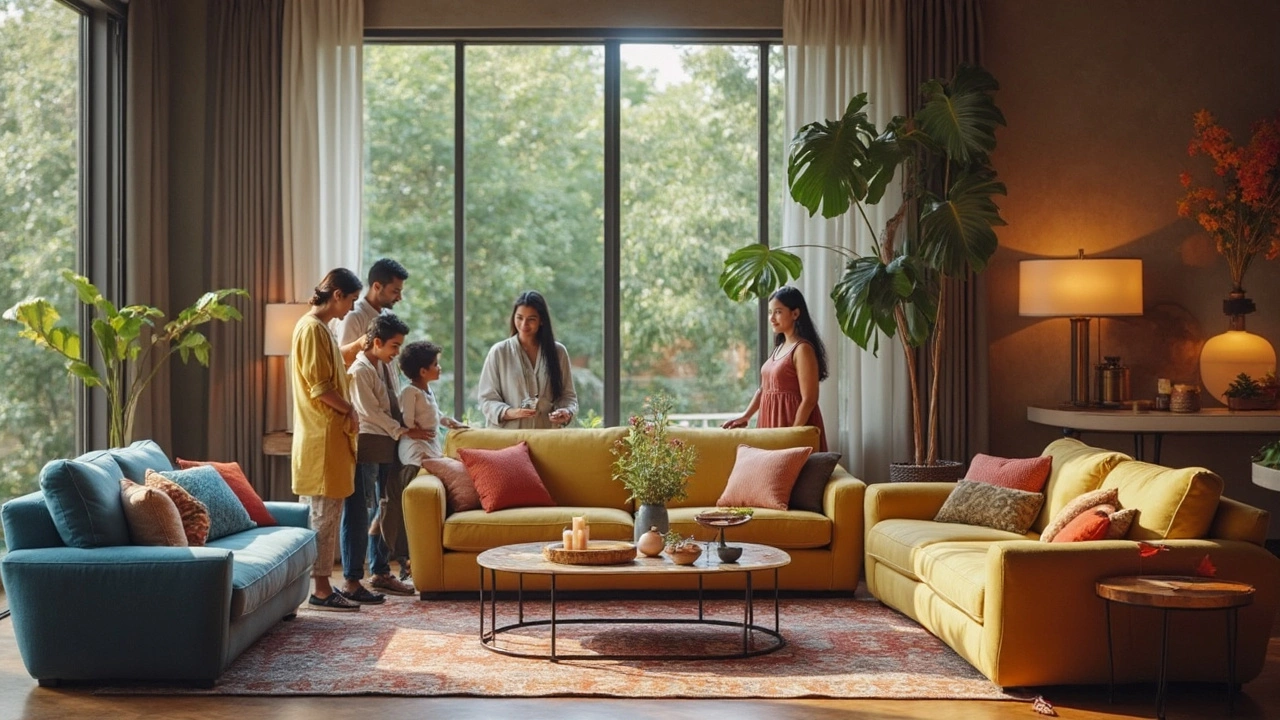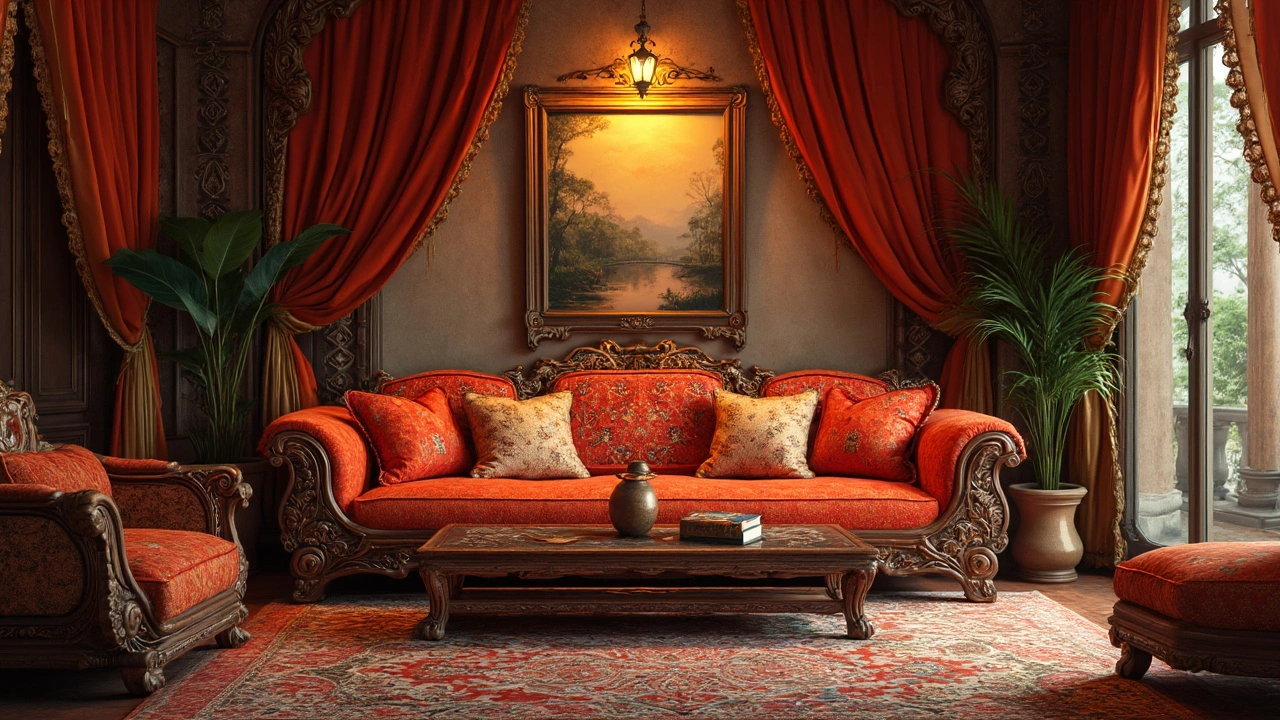Buying a sofa is no joke. It’s that one piece of furniture you probably spend a lot of time on – whether you're binging new shows, napping away a lazy afternoon, or just having a chat with friends. But the question is, how much should you really be spending on a sofa that won't send you diving into buyer’s remorse?
First off, not all sofas are built alike, and the price tag can vary widely. You might come across a cheap sofa that looks nice but feels like you're sitting on rocks. On the other hand, a pricier sofa could be as comfy as sinking into a cloud. Here’s where understanding what you’re paying for comes into play.
Factors like the type of wood, the kind of fabric, or even the way the springs are constructed can impact how much you pay. And trust me, these little details matter more than you'd think. A sofa made with solid wood and durable fabric will not only feel cozier but also last longer, which means you won't be hunting for a new one in just a few years.
- Understanding Sofa Pricing
- Factors Affecting Cost
- Why Material Matters
- Craftsmanship and Details
- Balancing Quality and Budget
Understanding Sofa Pricing
When it comes to figuring out how much a quality sofa should cost, there's a lot to consider. Prices can range from a few hundred dollars to several thousand, and understanding what contributes to these numbers can help you make a smart choice.
The sofa cost is influenced first by the size and type of the sofa. Simple loveseats might be budget-friendly, whereas larger sectionals or sofa beds can get pretty pricey. The brand is another key factor – luxury brands often come with premium price tags.
But it's not just the brand or the size. The materials used make a huge difference. A sofa covered in genuine leather or high-quality linen fabric can significantly jack up the price, but this also means you're paying for a more durable and long-lasting piece. On the flip side, synthetic materials may cost less but often show wear sooner.
Additionally, the internal construction affects the sofa's price. For instance, sofas with a kiln-dried hardwood frame and 8-way hand-tied springs are generally at the higher end of the price spectrum because these features enhance durability and comfort.
- Budget Sofas: $300 - $800, often featuring cheaper frames and synthetic fabrics.
- Mid-Range Sofas: $800 - $1,500, usually better materials with improved durability.
- High-End Sofas: Over $1,500, made with top-quality materials and craftsmanship.
Investing in a quality sofa might seem hefty upfront but think of it as buying comfort and longevity. Spending a bit more can save you in the long run if you're not replacing a worn-out piece in a few short years.
Factors Affecting Cost
Let's break down what goes into the cost of a sofa so you can figure out how much you should spend. Whether you're eyeing a budget-friendly buy or a luxurious lounge piece, understanding the factors affecting sofa cost can help you make a smart decision.
Materials: This is where most of your money goes. Sofas made from solid hardwood frames and genuine leather or high-quality fabric are at the top of the range. Sure, shopping for a fabric couch might give you more options, but the price varies based on the durability and weave of the fabric. Look out for high-thread-count cotton or ethically sourced leather if you're going for longevity.
Craftsmanship: Every couch has a story, and craftsmanship is the plot. Are the cushions hand-sewn? Is the frame reinforced with dowels or screws? Skilled craftsmanship ensures your sofa isn't just a pretty piece of furniture but also a reliable one. This usually comes at a higher price, but it means fewer headaches and maintenance costs later.
Brand Name: Sometimes you do pay for the brand. Well-known brands often charge more, not just for recognition but because they’ve built a reputation for using quality materials and offering better customer service. A recognizable name can ensure you're not left in the lurch if something were to go wrong.
Customization: Opting for a custom sofa? Be prepared to pay more for that bespoke beauty. Whether it's choosing a unique color, specific dimensions, or exclusive fabric, customization adds to the price but also provides a sofa that truly fits your style and space.
- Wood Type: Sofas with frames made from hardwoods like oak or maple tend to cost more than those made from pine.
- Spring System: Eight-way hand-tied springs in sofas cost more compared to sinuous springs but offer better support and durability.
- Cushion Fill: Down-filled cushions are luxe and more expensive, while foam and polyester come cheaper but might not provide the same comfort.
Knowing what to look for can help you find a quality sofa that suits both your needs and your wallet. And hey, it's better to be wise now than regret it when you're stuck with a lumpy sofa down the line.

Why Material Matters
When it comes to choosing a quality sofa, the material is one of the biggest factors that affects both the sofa cost and its longevity. Imagine investing in a sofa that looks stunning but starts to fray or sag within a year. It’s not what any of us want, right?
So, let’s talk leather. It’s a popular choice, praised for its durability and timeless style. Genuine leather sofas are a bit of an investment though, with prices often starting in the higher range. However, they’re resistant to wear and tear, and if you take care of them, they can last decades. Plus, spills? Just a wipe away. If you’re considering leather, it’s worth knowing there’s a hierarchy: full-grain, top-grain, and bonded leather, each affecting price and durability differently.
Now, we’ve got fabric sofas. The good ones fit right into your everyday life, offering comfort and versatility, and they come in a variety of materials like cotton, linen, or microfiber. Fabric sofas are generally more affordable than leather, but they might require a little more maintenance—think about those red wine spills and pet hair battles. A practical tip: look for sofas with removable covers. They’re life-savers for cleaning accidents.
For those who love the eco-friendly route, there are plenty of options made from recycled or sustainable materials. Not only do they reduce your carbon footprint, but they also tend to dodge harmful chemical treatments, making them safe for your family.
| Material Type | Average Lifespan | Price Range |
|---|---|---|
| Genuine Leather | 15-20 years | $1,500 - $5,000 |
| Fabric (e.g., cotton, linen) | 5-10 years | $500 - $3,000 |
| Microfiber | 7-15 years | $600 - $1,500 |
Remember, as you scout for the perfect sofa, keep an eye on the material. It’s more than just a surface; it’s the difference between a great investment and a gritty regret.
Craftsmanship and Details
When it comes to buying a quality sofa, craftsmanship is where the real magic happens. This involves everything from the frame construction to the final stitching of the upholstery. Basically, it's what separates a showstopper sofa from one that barely makes the cut.
The first thing to know is that a sturdy frame is the backbone of any high-quality sofa. Most quality sofas feature frames made from hardwoods like oak, ash, or beech. These types of wood provide the strength needed to withstand years of relaxation and Netflix marathons.
Then there’s the suspension system. A quality sofa often uses sinuous springs or an eight-way hand-tied spring system. The latter is usually found in more expensive pieces and is often touted as the best option due to its superior flexibility and durability.
- Look for sofas with joints that are doweled, glued, and screwed for enhanced durability.
- Avoid sofas that rely solely on staples and nails; they won’t hold up over time.
- Make sure there are corner blocks for extra support, especially at stress points.
Moving on to upholstery, this is where your style and comfort really come into play. Leather and high-quality fabric are the go-to materials for excellent sofas. They may cost a bit more upfront, but they outlast their cheaper counterparts.
Attention to detail can make or break a sofa's appeal. Details such as the type of cushion fill, stitching, and even the sewing thread can affect the sofa’s look and feel. For instance, in top-tier sofas, you'll find double stitching along the seams, which not only looks nicer but also prevents fraying.
A solid understanding of these details helps you better evaluate whether you're getting your money's worth. After all, a sofa is not just a piece of furniture—it’s often a centerpiece in your home. Investing a bit more in quality now can save you from a replacement headache later on.

Balancing Quality and Budget
Balancing your wallet with the desire for a well-built sofa might feel like walking a tightrope, but it doesn't have to be a headache. A smart start is figuring out your budget range and what's non-negotiable in a quality sofa. This approach helps prioritize essential features over fancy extras that might not add much.
One of the easiest ways to balance cost without compromising is to look for sofas during sales seasons. Black Friday, Cyber Monday, and end-of-season clearances are golden opportunities to snag a high-quality piece at a lower price. Besides, checking out local showrooms can give you a feel for different models without paying full retail price.
Another tip is to consider the frame material. Opting for a sofa with a kiln-dried hardwood frame might be slightly more expensive, but it's a solid investment for durability. Compare that to something flimsier like particleboard, which won't last as long. Choose a frame type that matches both your lifestyle and budget.
Think about the fabric too. While luxurious fabrics are tempting, they can hike up the price. Microfiber or durable blends often look great and wear well over time without burning a hole in your pocket. There's always a balance between wanting the best fabric and what's actually practical for everyday life.
Lastly, remember that some reputable brands offer custom sofas where you can choose components based on budget and taste. By picking your own materials, you often get a more tailored piece. Plus, you might stumble upon deals where customization doesn’t come with a hefty price.
In the end, scoring a sofa that balances quality and budget is possible with a little bit of research and timing. It's all about knowing where to invest in key materials and when to take advantage of seasonal offers.

